Viburnum Profile
Written by Iris
Nov 13 2021
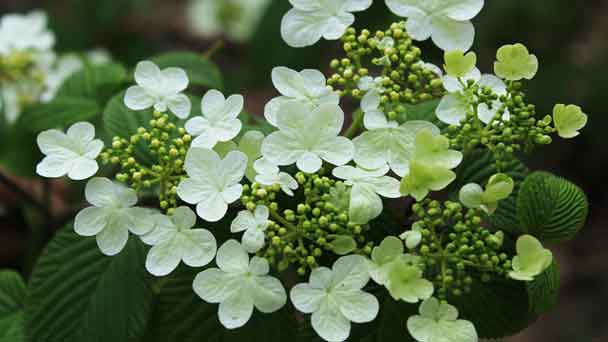
Generally, podophyllum is a dense evergreen shrub with glossy medium to dark green leaves. The flowers are white to pink and usually have a strong fragrance. They are usually arranged in an umbrella shape, although in some species they appear as complete globules. Some pods are deciduous, and these pods are usually grown for their particularly showy flowers.
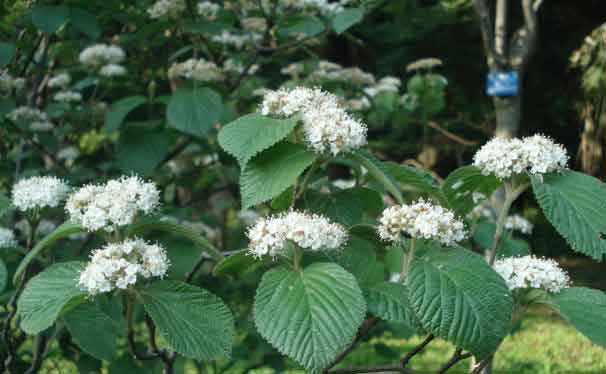
Read More:
12 Wonderful Evergreen Shrubs for Your Garden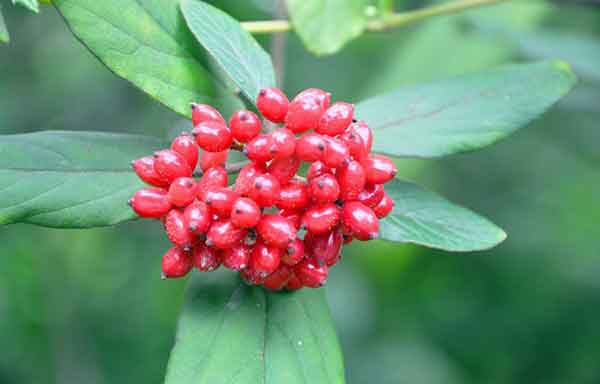
Next, you'll need to cold stratify your seeds, mimicking a winter environment by placing the sealed bag in a refrigerator for 3 months and opening the bag once a week to exchange air. Follow this cold stratification with another period of warm stratification, which will break the seeds'dormancy. Seeds can then be sown 1/4” to 1/2” deep in either prepared seedbeds or native soil and should germinate the second spring after planting.
Place your cuttings in a container with good quality compost and lightly water them. They will need some light, but it’s not recommended to keep them in direct sunlight. Using a propagator would be ideal. The cuttings should become established in 5-10 weeks.
Check the outside of your plants for stems that can be bent to soil level. You should then make a small incision in the stem and bury it in the soil. Everything being well, this stem should form its own roots in 1-2 months. Once it’s well established, you can then transplant it elsewhere in your garden, so it has room to flourish.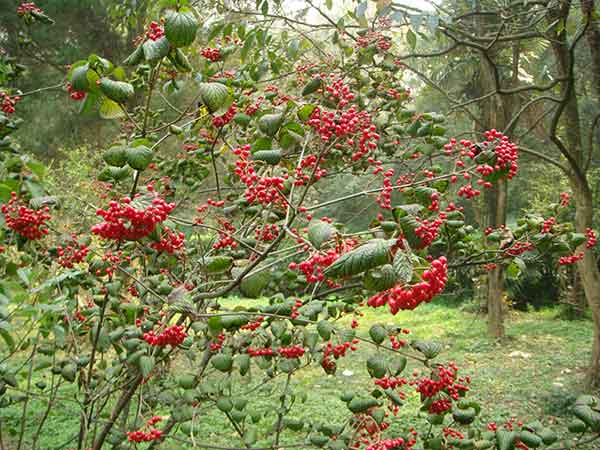
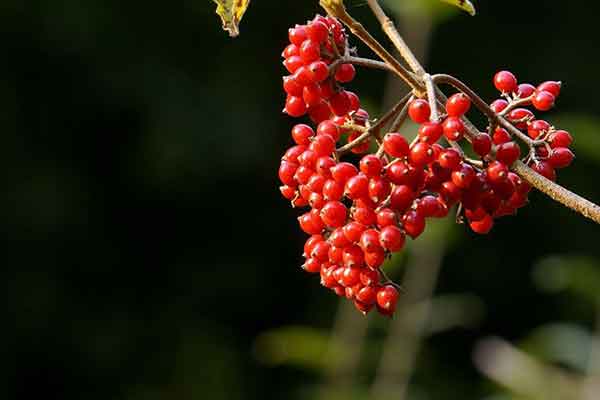
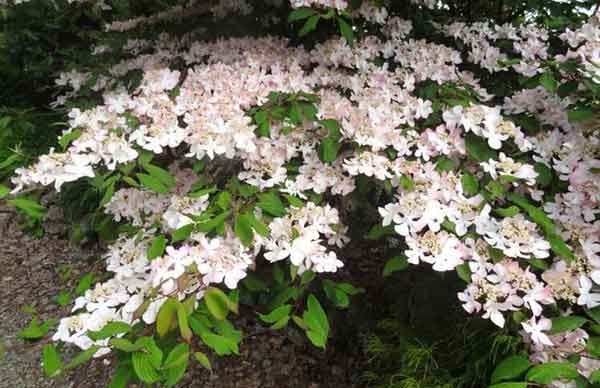
‘Blue Muffin’ viburnum is a compact type of Arrowwood viburnum. It gets 4' to 7' tall and produces intense blue fruit in the fall.
‘Anne Russell’ grows 6' to 8' high. It’s a type of Burkwood viburnum that produces white snowballs of flowers with a spicy scent in the spring and red fruit in the fall.
'Korean Spice' viburnum is native to Korea and Japan but is an old Southern favorite. It’s a bushy shrub with very fragrant white flowers in spring and dark green leaves that darken to red in the fall. It grows up to 6 feet tall.
'Chinese Snowball' viburnum is another Southern favorite, beloved for its fragrant white flowers that measure 5" to 8" across. It grows to 12 feet tall on average but can reach 20 feet in the warmest parts of its growing range.
'David' viburnum is an evergreen with glossy, dark green leaves. It’s a small variety that gets 3' to 4' tall and is best suited to mild climates like the Pacific Northwest.
'Nanum' is a dwarf variety that stays under 3 feet tall. It makes white snowball flowers but rarely produces fruit.
Powdery mildew can show up on leaves, but don't spray with sulfur-based sprays lest you damage the leaves.
The viburnum leaf beetle is an invasive bug from Asia and Europe that was introduced to North America in the late 1970s in Canada. It's making its way south and causing a lot of damage to the viburnum, devouring every leaf on a tree. Spray the larva with pesticides as soon as you spot them on the foliage.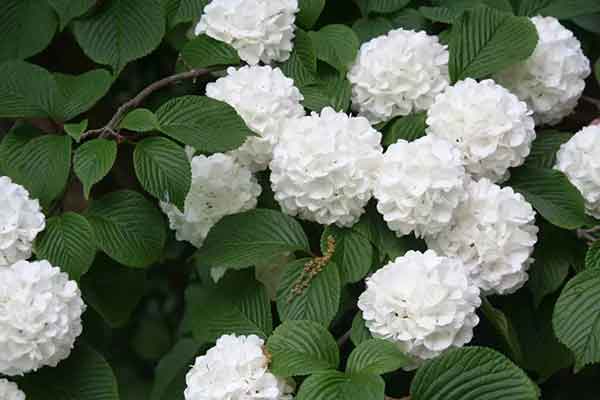
Use smaller varieties for a low hedge along a walkway or to define a space with a landscape.
Grow viburnum for height in the back of a border.
Plant in containers, along with annuals, and place a pair on either side of an entrance.
Plant varieties are known for fragrant blooms near an outdoor seating area so you have a flower-scented place to sit in the spring.
Viburnum can thrive in deep shade, so train them as a tree and use them to naturalize a woodland edge or to create an understory in your yard.
Use as a foundation planting.
Use in a butterfly or wildlife garden since winged creatures dine on their flowers and fruit.
Use as an anchor in a border, or as a specimen plant.
Viburnum PictureViburnum InfoEcological Habits of ViburnumHow to Grow and Care for ViburnumHow to Grow ViburnumHow to Care for ViburnumUses of ViburnumMedicinal Uses of ViburnumEdible Uses of ViburnumVarieties of ViburnumViburnum Common Pests/DiseasesViburnum Design TipsViburnum Companion Plants
Viburnum Picture

Viburnum Info
| Botanical Name | Viburnum spp. |
| Common Name | Viburnum, American cranberry bush, hobblebush |
| Plant Type | Deciduous shrub |
| Mature Size | 3 to 20 feet tall, depending on cultivar |
| Sun Exposure | Full sun to partial shade |
| Soil Type | Rich, moist, well-drained soil |
| Soil pH | 5.5 to 6.6, but also tolerates slightly alkaline soil |
| Boom Time | Early to late spring, depending on species |
Ecological Habits of Viburnum
Viburnums bloom in white in the last part of April through early May. Viburnums vary in their height, spread, and style of flower but are similar in preferring sun to part shade and in being disease and pest resistant. While most flowers are unscented, those that are fragrant are wonderfully so. An interesting source of diversity in the viburnums comes with the leaf shape and texture. The fruit is often also of visual interest, with red, to dark purple to blackberries, which often serve as an important food source for birds.Read More:
12 Wonderful Evergreen Shrubs for Your Garden

How to Grow and Care for Viburnum
How to Grow Viburnum
- With Seeds
Next, you'll need to cold stratify your seeds, mimicking a winter environment by placing the sealed bag in a refrigerator for 3 months and opening the bag once a week to exchange air. Follow this cold stratification with another period of warm stratification, which will break the seeds'dormancy. Seeds can then be sown 1/4” to 1/2” deep in either prepared seedbeds or native soil and should germinate the second spring after planting.
- With Cuttings
Place your cuttings in a container with good quality compost and lightly water them. They will need some light, but it’s not recommended to keep them in direct sunlight. Using a propagator would be ideal. The cuttings should become established in 5-10 weeks.
- With Layers
Check the outside of your plants for stems that can be bent to soil level. You should then make a small incision in the stem and bury it in the soil. Everything being well, this stem should form its own roots in 1-2 months. Once it’s well established, you can then transplant it elsewhere in your garden, so it has room to flourish.

How to Care for Viburnum
- Light
- Soil
- Water
- Temperature and Humidity
- Fertilizer
- Pruning

Uses of Viburnum
Medicinal Uses of Viburnum
Viburnum has a history of being used as herbal medicine. Viburnum opulus has been used to relieve muscle spasms, cramps, and promote relaxation. Viburnum prunifolium has been used to help with gynecological issues in women. Both of these viburnums have also been used as a sedative.Edible Uses of Viburnum
Whether raw or cooked, the fruit of viburnum can be eaten. Some say they taste similar to raisins or dates. Certain varieties of viburnum berries can be used to make jams, jellies, sauces, or wine. The berries are not the only edible part of viburnum. The leaves have been used to make tea, while the flowers can add some sweetness to dessert dishes. It is important to know the variety of your viburnum as the species Viburnum opulus'berries are mildly toxic raw and must be cooked.
Varieties of Viburnum
Viburnums range from 3-foot-tall shrubs to 15-foot-tall trees. Here are some of our favorites.‘Blue Muffin’ viburnum is a compact type of Arrowwood viburnum. It gets 4' to 7' tall and produces intense blue fruit in the fall.
‘Anne Russell’ grows 6' to 8' high. It’s a type of Burkwood viburnum that produces white snowballs of flowers with a spicy scent in the spring and red fruit in the fall.
'Korean Spice' viburnum is native to Korea and Japan but is an old Southern favorite. It’s a bushy shrub with very fragrant white flowers in spring and dark green leaves that darken to red in the fall. It grows up to 6 feet tall.
'Chinese Snowball' viburnum is another Southern favorite, beloved for its fragrant white flowers that measure 5" to 8" across. It grows to 12 feet tall on average but can reach 20 feet in the warmest parts of its growing range.
'David' viburnum is an evergreen with glossy, dark green leaves. It’s a small variety that gets 3' to 4' tall and is best suited to mild climates like the Pacific Northwest.
'Nanum' is a dwarf variety that stays under 3 feet tall. It makes white snowball flowers but rarely produces fruit.
Viburnum Common Pests/Diseases
Viburnum is considered pest-free plants, but they can still have problems.Powdery mildew can show up on leaves, but don't spray with sulfur-based sprays lest you damage the leaves.
The viburnum leaf beetle is an invasive bug from Asia and Europe that was introduced to North America in the late 1970s in Canada. It's making its way south and causing a lot of damage to the viburnum, devouring every leaf on a tree. Spray the larva with pesticides as soon as you spot them on the foliage.

Viburnum Design Tips
Use taller varieties of viburnum as a screen or tall hedge.Use smaller varieties for a low hedge along a walkway or to define a space with a landscape.
Grow viburnum for height in the back of a border.
Plant in containers, along with annuals, and place a pair on either side of an entrance.
Plant varieties are known for fragrant blooms near an outdoor seating area so you have a flower-scented place to sit in the spring.
Viburnum can thrive in deep shade, so train them as a tree and use them to naturalize a woodland edge or to create an understory in your yard.
Use as a foundation planting.
Use in a butterfly or wildlife garden since winged creatures dine on their flowers and fruit.
Use as an anchor in a border, or as a specimen plant.
Viburnum Companion Plants
Viburnums are versatile plants. Plant lower-growing types, such as the korean spice viburnum (V. carlesii), near windows or patios to enjoy their fragrance. Plant large shrubs, such as the American cranberry bush (V. trilobum) or snowball viburnum (V. opulus) in a mixed shrub hedgerow with other large shrubs such as lilacs and forsythia. Plant easy to grow natives, such as the nannyberry (V. lentago) and black haw viburnum (V. prunifolium), along the forest edge to provide food for wildlife or in an abandoned area to fill in a space.
Latest Updated
- Benefits of Bugleweed - 7 Science-backed Health Benefits
- Bugleweed Dangers & Side Effects - Is It Poisonous?
- How to Plant Evergreen Trees - What You Should Know
- When to Plant Evergreens - Grow Guide for Evergreen Trees
- 12 Wonderful Evergreen Shrubs for Your Garden
- 12 Popular Evergreen Plants with Pictures for Beginners
- When And How To Prune A Lilac Bush Like a Pro
- How to Grow & Care for Lilac Vine (Hardenbergia Violacea)
- Japanese Lilac Tree (Syringa Reticulata) Care & Propagation Guide
- Shumard Oak Pros and Cons - What to Know
Popular Articles
- Winter maintenance of Antirrhinum Majus
- How to Grow Terminalia Mantaly Tree
- How to Grow and Care for Crossostephium Chinense
- How to grow Antirrhinum Majus in spring
- Peristeria Elata (Dove Orchid) Profile: Info & Care Guide
- Underwatered Snake Plant (Sansevieria Trifasciata) - Signs And How To Fix
- How to Care for Brazilian Jasmine Plant (Mandevilla Sanderi)
- How to Grow & Care for Graptopetalum Purple Delight in Summer
- Rosa Chinensis (China Rose): Plant Growing & Care Tips
- How to Care for Baby Sun Rose (Aptenia Cordifolia)